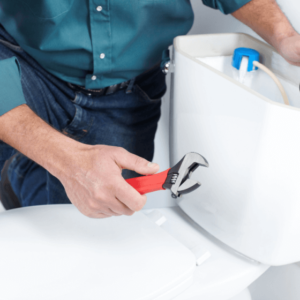Faux suede is a decorative painting technique that has grown in popularity because of the soft and elegant texture it provides to plain, ordinary walls. While faux suede paint can be bought in a can, you can save money and add a personal touch to your walls by creating your own custom “suede” paint. All it takes is a little patience, creativity and the right know-how.
Step 1: Prep the Room
Remove furniture from the room in which you’re working or place it in the center of the room and cover it with drop cloths. Remove fixtures, window coverings, switch plates and outlet covers, or cover them with painter’s tape. Also use painter’s tape to protect windowsills, baseboards, door hinges, the ceiling perimeter and anything else that you don’t want to get paint on.
Properly cleaning and repairing surfaces is extremely important when painting since paint doesn’t adhere to dirty or damaged areas. Clean the walls with warm, soapy water and a sponge or cloth. Let the surface dry for at least an hour before painting.
If walls have cracks, holes or other damages, apply spackling compound with a putty knife. Once it dries, sand the area with fine-grit sandpaper. For extensive drywall damage, see How to Patch Drywall to see how to make larger drywall repairs. Consider adding an extra day to your project plans in order to give the compound adequate time to dry.
Lay canvas drop cloths below the walls you’re painting. Canvas cloths stay in place better than plastic ones. Use painter’s tape to attach the cloths to the baseboard or bottom of the wall so that they don’t shift around while you’re painting—this reduces the chance of getting paint on your floor.
Safety Alert!
Be sure you will be painting in a well-ventilated area. Open windows or use a box fan to make sure you’ll have proper ventilation. For additional painting tips, see Painting Safety.
Step 2: Apply Primer
To get the best results, apply at least one coat of primer before you start painting. Start with the ceiling, first covering the perimeter and unpainted areas around fixtures with a paintbrush. Use a roller applicator and move in 6′-square sections, in a series of overlapping “W” strokes from right to left, then back from left to right. Spread the primer evenly using horizontal strokes.
Step 3: Paint a Base Coat
Once you’ve prepped the room, it’s time to apply the base coat. This coat provides a foundation for glazes that will be applied in a later step to create the suede-like surface appearance. Use a paintbrush or roller to apply a coat of True Value EasyCare Ultra Premium Interior Paint in the color and finish of your choice. Many people opt for “natural” colors in shades of tan, brown or gray that can accentuate a brushed suede appearance, but it’s not necessary. Paint first in corners, along the ceiling/floor perimeter and around any fixtures still on the wall. Then use the roller technique from Step 2. Allow the area to dry completely for at least 24 hours.
Step 4: Prepare Paint/Glaze Mixture
Use a large paint bucket to mix up a gallon’s worth of a paint/glaze mixture. Mix one part (1 quart) True Value EasyCare Ultra Premium Interior Paint in a slightly different hue of the base color and three parts (3 quarts) True Value Simply Glaze acrylic glaze. Mix it well with a stir stick and then pour the mixture into a paint tray to prepare for application. Depending on the size of the wall you’re painting, you may need to mix more later on. Just use the same formula when needed.
Step 5: Apply Paint/Glaze Mixture
Start applying the glaze with a roller applicator, covering small, manageable sections at a time (approximately 3′ x 3′ or 4′ x 4′). Next, twist or bunch up a few clean linen or lint-free cotton cloths or rags. Gently roll the cloths down the wall, in order to “roll off” the glaze. The clean rag will pick up paint from where you just painted, creating the textured appearance of suede. Once the rag has become completely saturated with paint, discard it and use another. Keep applying paint and rolling it off in downward strokes across the surface of the wall until you’ve covered it.
Helpful Tips
Wear plastic or rubber gloves when rolling off the paint to keep your hands protected from paint saturation and for easier clean up.
Be careful not to let the coat of glaze dry before you begin rolling or you won’t achieve the desired effect. If the glaze dries, you may have to start over with applying the base coat again.
Once you’ve finished rolling off that particular section, repeat this process again on continuing sections of the wall until you have covered it entirely. Take care to blend each section into the next for more even results. When finished, take a step back and make sure you’ve achieved the desired effect. Let the wall surface dry for at least 24 hours.
Step 6: Clean Up
Pick up drop cloths carefully, making sure you don’t spread around any paint that may have gotten on them. Close up your paint cans and dispose of them appropriately. Clean your brushes and other tools with warm, soapy water. Thoroughly rinse your roller covers and brushes in water until the water runs clear. Place them in a brush/roller spinner, if you have one, to remove excess liquid. Store in their protective sleeves or hang them on nails or hooks. Next, remove the painter’s tape at a 45-degree angle to avoid removing any fresh paint. Remember that the longer it stays on, the harder it is to remove. After the paint has dried completely, reinstall fixtures and move furniture and other items back to their original locations.
Nice job! Now your walls have added appeal from the texture and look of brushed suede.
Project Shopping List
Here’s what you’ll need to complete this project successfully.
- Drop cloths
- Painter’s tape
- Mild detergent
- Sponge or cloth
- Spackling compound
- Putty knife
- Fine-grit sandpaper
- Canvas drop cloths
- Box fan
- Paintbrush
- Roller applicator
- EasyCare Ultra Premium Interior Primer/Sealer
- EasyCare Ultra Premium Interior Paint
- Paint bucket
- Simply Glaze acrylic glaze
- Paint stirrer
- Paint tray
- Linen or lint-free cotton cloths
- Rubber gloves
- Paint roller












